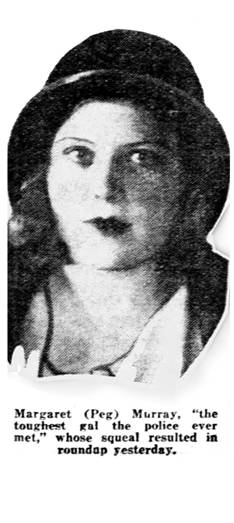Misplaced Romanticism
It was hard to be upbeat without a job or money. Your life had been derailed so badly that you couldn't even find the right track, let alone get back on it. Discouragement was inevitable, and it made things even worse. People really needed "mental health breaks," distractions that entertained and refreshed them.
If you had a radio at home, you knew that radio broadcasting was just entering its Golden Age, and it was there for you - but radios were expensive in the early 1930s. If you couldn't afford adequate food, you were not about to buy a radio. Movies were more affordable, if you went only once in a while, but that was a sometimes thing. The most affordable, and also the most abundant, font of diversion was the daily newspaper. In terms of entertainment, the newspaper was the Internet of the 1930s. Reading it lifted you out of the dreariness of your daily existence. The comics gave you laughter. You could choose to follow, day after day, the life and adventures of anyone you met in the newspaper: a movie star, a socialite, a baseball player, a comic strip hero - or just maybe, a criminal.
*
I'm not sure that anyone followed the day to day exploits of, say, Legs Diamond, but many a small-time criminal's arrest and trial grabbed the public's attention for weeks, or even months. People were eager to read the next day's exciting "episode," especially if the people accused were young - older readers already were very worried about how their own children or grandchildren were going to survive the Depression.
Following the latest attention-getting crime, reporters would quickly focus on one or two of those involved (if possible, young, attractive, and female). They would collect biographical information by interviewing friends and relatives, and use what they learned to stoke public interest until a trial began - at that point, the trial would supply new material to report, and perhaps a nice conclusion. For many readers, reading a continuing series of articles about a crime was like watching a soap opera.

New York Daily News, March 22, 1931

New York Daily News, January 12, 1931
Thus, when the bloodied remains of Pretty Steve Sweeney appeared on the front page - we looked at that picture earlier - although his life had just ended, his story had just begun. From that day forward, readers would be treated to whatever the Daily News could scrounge up. They learned that his gang had committed approximately 500 armed robberies of speakeasies in the greater New York area, pulling in an estimated $100,000. They read that the gang members were young, some of them under 20. Many of them had taken direction not from Sweeney, but from Peg, his gun moll, 17 years old, who - despite living with Pretty Steve - was a virgin (the doctor who examined her at the jail was happy to confirm that fact for the newspaper's readers). The moll's mother lamented to a reporter that it was tough being an impoverished mother in Hell's Kitchen, but that Peg was still a good girl, who often attended Sunday Mass after a full Saturday night of stick-ups.
One thinks of the grandparents who read her sorry tale, dabbing away their tears, and thanking God that their own families were not like hers.
***

